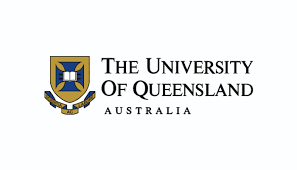AUSTRALIA
Overview of the Australia
Australia, located in the Southern Hemisphere, is a vast island continent surrounded by the Indian and Pacific Oceans. It features diverse landscapes, from beaches to deserts and tropical rainforests. The culture is a blend of Indigenous heritage and multicultural influences. The climate varies from tropical in the north to temperate in the south. Australia’s healthcare system is advanced, and its transport network includes extensive roadways, railways, and airports, supporting both domestic and international travel.

Australia boasts modern infrastructure with world-class facilities in education, healthcare, and technology. It consistently ranks high globally in quality of life and economic freedom. The country is known for its safety and welcoming attitude toward immigrants, offering numerous opportunities in various sectors including education, healthcare, and technology. Australia’s immigration policies support skilled professionals and students, making it a desirable destination for those seeking career and personal growth.
Percentage Distribution of Non-Immigrant Student Visa Holders in Australia by Country (2014-2023 In Percentage)
Percentage Distribution of Non-Immigrant Student Visa Holders in Australia by Country (2014-2023 In Percentage)
VISAS
Climate and Seasons

SPRING
September to November
Minimum: 50°F (10°C)
Maximum: 77°F (25°C)

SUMMER
December to February
Minimum: 59°F (15°C)
Maximum: 95°F (35°C)

AUTUMN
March to May
Minimum: 53°F (12°C)
Maximum: 82°F (28°C)

WINTER
June to August
Minimum: 41°F (5°C)
Maximum: 68°F (20°C)
WHY STUDY IN AUSTRALIA?
Studying in Australia offers a unique blend of world-class education and vibrant cultural experiences. Australian universities are renowned for their high academic standards and cutting-edge research, providing students with exceptional learning opportunities. The country’s diverse and inclusive society enriches the educational experience, fostering global perspectives and intercultural understanding. Australia’s beautiful landscapes and favorable climate enhance student life, offering numerous outdoor activities and travel opportunities. Additionally, the Australian education system emphasizes practical learning and offers various support services for international students, including career counseling and academic guidance. With a strong emphasis on innovation and research, Australia prepares students for global careers in a range of fields. The country’s safety, quality of life, and post-graduation work opportunities make it an attractive destination for those seeking both academic and personal growth.
COURSES
Computer Science
Business Analytics
MBA
Mechanical Engineering
Major Courses Opted by Students (2014-2023)

Test Preparation at PVR Global Educational Services
PVR Global Educational Services offers tailored training for GRE, IELTS, PTE, SAT, GMAT, and Duolingo tests. Expert instructors provide personalized study plans, practice materials, and mock exams to boost proficiency in reading, writing, listening, speaking, and quantitative skills. Flexible scheduling and comprehensive support help students achieve high scores and succeed in their academic and professional endeavors.
Quick Facts about Australia
Australia boasts several world-renowned universities, such as the University of Melbourne and Australian National University, known for academic excellence.
Australian institutions offer a wide range of programs and courses, allowing students to specialize in their field of interest.
Access to advanced research facilities and funding supports students in conducting groundbreaking research across various disciplines.
Experience a rich multicultural environment with students from around the globe, enhancing global understanding and cross-cultural interactions.
International students can work part-time during their studies and benefit from post-graduation work visas, aiding career development.
Australia offers a high standard of living, with safe cities, beautiful landscapes, and excellent healthcare and recreational facilities.
Comprehensive support services, including academic counseling, career advice, and personal assistance, ensure students thrive academically and personally.
Percentage Distribution of Most Popular Courses Opted by Indian Students in Australia(2014-2023 In Percentage)
Education System in Australia
Basic education for children aged 5-17, divided into primary (Years K-6) and secondary (Years 7-12) schooling phases.
Grade System: A, B, C, D, E
Duration: 13 years (K-12)
Average Fee: Public schools free; private schools range from $5,000 to $30,000 per year
Post-secondary education including vocational training and higher education at universities and specialized institutions for career and academic advancement.
Grade System: High Distinction, Distinction, Credit, Pass, Fail
Duration: Varies by program
Average Fee: $20,000 to $45,000 per year
Undergraduate program providing foundational knowledge and skills in various fields, typically required for entry-level professional careers.
Grade System: High Distinction, Distinction, Credit, Pass, Fail
Duration: Typically 3-4 years
Average Fee: $30,000 per year
Graduate program offering advanced and specialized knowledge in a specific field, often required for professional and academic expertise.
Grade System: High Distinction, Distinction, Credit, Pass, Fail
Duration: Typically 1-2 years
Average Fee: $35,000 per year
Highest level of academic degree focused on original research and contributing new knowledge to a specific field of study.
Grade System: High Distinction, Distinction, Credit, Pass, Fail
Duration: Typically 3-4 years
Average Fee: $40,000 per year

Identifying the Right Institution
Check university rankings and reviews from reputable sources like QS World University Rankings and Times Higher Education for credibility.
Evaluate the specific programs and courses offered to ensure they align with your academic and career goals and industry needs.
Research the qualifications and achievements of faculty members to ensure you receive education from experienced and renowned experts in your field.
Consider universities that provide ample research facilities and funding for student projects, enhancing academic and practical learning experiences.
Assess the quality of campus amenities, including libraries, labs, and recreational areas, which contribute to a supportive learning environment.
Review available support services like academic advising, career counseling, and mental health resources to ensure comprehensive student care.
Evaluate the strength and reach of the university’s alumni network for mentorship, career opportunities, and professional connections after graduation.
No of Students placed in different sectors (2014-2023 In Percentage)
Success Rate of Indian Students in the AUS by Sector (2014-2023 In Percentage)
Getting a Australia Visa
- Visitor Visa (Subclass 600): For tourism, business, or visiting family.
- Student Visa (Subclass 500): For studying in Australia.
- Work Visa: Various types depending on the nature and duration of work.
- Permanent Residency Visa: For those intending to live permanently in Australia.
Other Visas: Family, Partner, Humanitarian, etc.
- Visit the official Australian Government Department of Home Affairs website to check specific requirements for the visa type you need.
- Passport: Must be valid for at least six months beyond your intended stay in Australia.
- Visa Application Form: Complete the appropriate form for your visa type.
- Proof of Funds: Show you can support yourself financially during your stay.
- Health Insurance: May be required depending on the visa type.
- Character and Health Certificates: Police clearance and medical examinations might be necessary.
- Additional Documents: Depending on visa type (e.g., enrollment confirmation for student visas, job offer for work visas).
- Register and create an account on the ImmiAccount portal to manage your visa application.
- Fill out the application form online via your ImmiAccount.
- Upload all required documents.
- Fees vary based on the type of visa.
- Payment can be made online via the ImmiAccount portal.
- Some applicants may need to provide biometrics (fingerprints and photograph).
- Visit a local Australian Visa Application Centre (AVAC) or Australian Biometric Collection Centre (ABCC) if requested.
- Some visa types may require an interview.
- Attend the interview at the nearest Australian Embassy, Consulate, or AVAC.
- Processing times vary based on the type of visa and individual circumstances.
- You can check the status of your application through your ImmiAccount.
- If approved, your visa grant notification will be sent to you via email.
- The visa will be electronically linked to your passport.
- Start Early: Begin the application process well in advance of your intended travel date.
- Be Honest: Provide accurate and truthful information throughout the application process.
- Follow Instructions: Adhere to specific guidelines provided by the Australian Department of Home Affairs.
List of Universities










Intake details
Intake | Start Dates | Remarks |
|---|---|---|
Fall | September to October | Primary intake for most programs; peak admission period. |
Spring | January to February | Secondary intake; fewer programs available compared to Fall. |
Summer | May to June | Limited programs; typically for accelerated courses or specific programs. |
Winter | November to December | Not commonly used; available for some programs with specific start dates. |
Deadlines
Deadline Type | Fall Intake | Spring Intake |
|---|---|---|
Scholarship Deadlines | April to June | October to November |
Admission Deadlines | June to August | October to November |
Best Time to Start the Process | December to February | April to June |
Last Date to Apply for Admission | August 31 | November 30 |
Documents required
Document Type | Requirements | Remarks |
|---|---|---|
Passport | Valid passport with at least 6 months validity | Ensure passport is current and valid for duration of study. |
Academic Transcripts | Official transcripts from previous institutions | Must be in English or officially translated. Include detailed records |
Proof of English Proficiency | IELTS, TOEFL, or other recognized test scores | Required if the primary language of instruction was not English |
Statement of Purpose | Personal statement outlining goals and motivation | Key to demonstrate your suitability and goals for the program |
Letters of Recommendation | Typically 2-3 letters from academic or professional referees | Should be from individuals who know you well and can speak to your abilities. |
Resume/Curriculum Vitae | Detailed CV or resume highlighting academic and professional experience | Include relevant experiences, skills, and achievements. |
Financial Documents | Proof of funds to cover tuition and living expenses | Bank statements, affidavits, or financial guarantees. |
Visa Application Form | Completed visa application form as per the Australian immigration requirements | Ensure all sections are accurately filled out. |
Health Insurance | Proof of Overseas Student Health Cover (OSHC) | Mandatory for all international students in Australia. |







